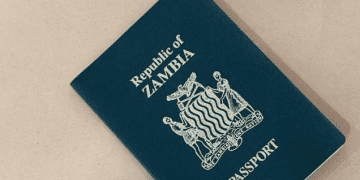By Chainga Zulu
Netflix is currently featuring “Shaka Zulu,” the original series. This series holds nostalgic significance for many of us who grew up watching it during a time when ZNBC respected its viewers by offering entertainment as opposed to the current situation of waxing lyrical about politicians and cadres. Consequently, many of us formed an impression, believing Henry Cele to be the authentic portrayal of Shaka. However, this sentiment may not resonate with Generation Z and Generation Alpha, as they associate Shaka with Marky 2. Setting aside this failed attempt at humor, let us delve into the essence of the matter.

Shaka Zulu, a renowned Zulu king who reigned from 1816 to 1828, gained recognition for his groundbreaking military strategies that transformed the Zulu army into an impressive fighting force. His military reforms revolutionized warfare in Southern Africa. Shaka exemplified visionary leadership, displaying a clear sense of purpose and direction. Remarkably, his leadership style offers valuable insights and lessons applicable to contemporary management practices, spanning from politicians and military generals to CEOs and religious leaders. Consequently, I present several ways in which elements of Shaka’s strategy retain relevance in modern management.
- Adopt A Proactive Leadership Approach
The current advocates of leadership erroneously concur that managers, presidents, and military generals should adopt a passive approach, leading from the rear and delegating significant responsibilities to their subordinates. They argue that this approach fosters capacity building and cultivates the next generation of leaders. However, I dissent for the following reasons:
a) Leadership entails being at the forefront, as implied by the term itself. By assuming a prominent position, a leader sets the pace for a positive work culture, propels high performance, and maximizes the potential of their teams. Embracing a hands-off management style is laissez-faire and has provided opportunities for individuals who now masquerades as leaders while displaying indifference towards their followers. How can one effectively, efficiently, and empathetically lead people without comprehending the political, socioeconomic, and cultural context in which they operate? This pattern is observable even in religious settings, where leaders assure their congregants of heavenly rewards while themselves indulge in extravagant lifestyles here and now. Likewise, we witness military generals reject peace deals and push for wars and ultimately get decorated with medals while their soldiers get burried under the onslaught of bullets and bombs. Furthermore, politicians purporting to represent the underprivileged reside in opulence, secluding themselves behind imposing walls and heightened security measures. Additionally, managers who issue orders and demand results from the comfort of an air-conditioned office, while their staff toil under the sun with meager rewards, epitomize this paradigm. These instances, among many others, serve as quintessential illustrations that resonate with our collective experiences. Shaka, on the other hand, would position himself on the battlefront, delivering the first decisive blow and issuing commands. If generals and politicians were compelled to be on the frontlines just to issue orders, we would witness a reduction in superfluous wars.
b) Inspiration and Motivation: Leaders who lead from the front inspire and motivate their team members. By exemplifying commitment, enthusiasm, and a strong work ethic, leaders establish a positive example that encourages team members to exert their utmost effort. Witnessing their leader actively engage and invest in the work instills a sense of purpose and motivation within the team. This unyielding tactic is employed by politicians to secure votes – the art of appearing as one with the people: shaking every hand, embracing babies, and partaking in local street and market experiences. Without a doubt, leaders should be perceived as individuals who are deeply connected to their constituents.
c) Accountability and Responsibility: Leading from the front fortifies accountability and responsibility within the team. When leaders assume ownership of their actions, fulfill their commitments, and adhere to high standards, they establish a precedent for the entire team. Team members are more inclined to take ownership of their work and be accountable for their actions when they witness their leader leading by example.
2. Formulate a distinct and well-defined strategy
Shaka’s military strategy, deeply rooted in the context of warfare in the early 19th century, continues to offer valuable insights and lessons that can be applied to contemporary management styles. Here are several ways in which elements of Shaka’s strategy remain relevant in modern management:
a) Agile and Responsive Approach: Shaka’s emphasis on agility and responsiveness resonates with modern management principles such as agile management and adaptive leadership. Just as Shaka’s forces adapted their tactics to the dynamic battlefield, organizations today need to be flexible, responsive, and capable of swiftly adjusting their strategies in rapidly evolving business environments.
b) Encouraging Innovation: Shaka’s military reforms were driven by innovative thinking, challenging conventional norms, and introducing novel tactics and weaponry. Similarly, in today’s business world, cultivating a culture of innovation and empowering employees to think creatively can enable organizations to outpace competitors and adapt to shifting market demands.
c) Psychological Warfare: Shaka’s utilization of psychological warfare, employing intimidating displays and tactics, foreshadowed the understanding of managing perception and influencing stakeholders. In modern management, effective leaders recognize the significance of communication, branding, and managing the psychological aspects of their teams and customers.
d) Continuous Learning and Intelligence Gathering: Shaka’s emphasis on intelligence gathering and reconnaissance underscores the importance of acquiring relevant data and information in contemporary management practices. In a fast-paced business environment, organizations must continually gather market intelligence, monitor trends, and analyze data to make informed decisions and maintain competitiveness.
e) Discipline and Training: Shaka’s focus on discipline and rigorous training translates into the importance of investing in employee development and continuous learning. Nurturing a disciplined and well-trained workforce leads to heightened productivity, improved performance, and greater adaptability to organizational changes.
f) Strategic Thinking and Positional Advantage: Shaka’s tactics of encirclement and flanking underscore the significance of strategic thinking and gaining a positional advantage. In today’s business landscape, leaders must analyze market dynamics, identify opportunities, and develop strategies that provide a competitive edge. Understanding the importance of positioning, both in terms of product or service offerings and market presence, can pave the path to long-term success.
g) Leadership and Team Cohesion: Shaka’s ability to unite and lead his warriors to victory exemplifies the importance of effective leadership and team cohesion. Strong leadership, clear communication, and fostering a sense of purpose and camaraderie within teams are pivotal in modern management to inspire employees, build trust, and achieve organizational goals.
3. Utilize Appropriate Tools to Implement The Strategy
To gain a competitive edge, leaders in various fields, including managers, politicians, and military generals, should avoid conforming to conventional approaches. Apple Inc serves as a prime example of a highly profitable enterprise due to its ability to deliver unique products and services. Consumers are not merely purchasing an iPhone or a MacBook; they are investing in distinctiveness. Every leader must identify the factors that differentiate them significantly from their peers. In this regard, I will discuss three such differentiators: the Assegai, the long shield, and the cow horn formation.
a) The Assegai, a short-stabbing spear introduced by Shaka, became the hallmark weapon of the Zulu warriors. Shorter in length compared to traditional spears, the Assegai proved highly effective in close-quarters combat. Shaka meticulously trained his warriors to engage the enemy at short range, leveraging their agility and manoeuvrability to overpower their opponents.
b) Adaptation of the Battle Shield. Shaka implemented significant modifications to the traditional Zulu shield as part of his military reforms. These adaptations aimed to enhance the effectiveness of Zulu warriors in battle. The shield adjustments were designed to improve mobility, facilitate close combat techniques, instill fear in the enemy, and establish a distinctive cultural and military identity. Aligned with his broader military strategy, which prioritized aggression, discipline, and the Zulu warriors’ effectiveness in combat, these modifications proved instrumental.
c) The Cow’s Horn Formation. Shaka frequently employed the military tactic of encircling and flanking the enemy to gain a strategic advantage. Leveraging their mobility and speed, Zulu warriors would outmanoeuvre their opponents, launching simultaneous attacks from multiple directions. This disruptive manoeuvre effectively disoriented the enemy’s formation, leading to confusion and ultimately enabling the Zulu forces to triumph over their adversaries.
Utilizing appropriate management tools significantly enhances operational efficiency, facilitates evidence-based decision-making, fosters effective collaboration and communication, aids in strategic planning and organizational structure, supports performance management, mitigates risks, and cultivates employee engagement and satisfaction. These indispensable tools empower politicians, military generals, and managers to proficiently lead their teams, drive organizational triumph, and effectively navigate the complexities of the contemporary business environment.
In conclusion, there are countless lessons one learn from Shaka’s military and leadership reforms. This write up is just but a tip. On the other hand, one can also engage in debates regarding Shaka’s methods, including their brutality and the stringent training imposed upon his soldiers, it is undeniable that he achieved remarkable advancements in the realms of warfare and management. By drawing inspiration from historical strategies, managers can gain fresh perspectives and valuable insights to successfully navigate the ever-evolving business landscape. Therefore, it is incumbent upon politicians, CEOs, managers, religious leaders, military generals, and others to observe Shaka’s approach and derive invaluable lessons on strategic planning, implementation, and effective management. Start by watching “Shaka Zulu,” the original series on Netflix.








































